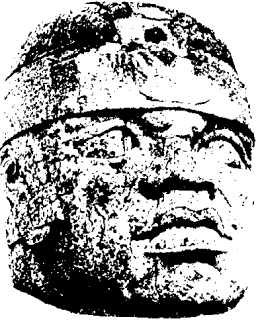 |
Science Frontiers ONLINE No. 123: May-Jun 1999 |
|
|
Heads Down!
S. Breiner wields a magnetometer when he searches for Olmec artifacts. This instrument allows him to detect buried objects, and he has made some surprising discoveries.
The Olmecs flourished circa 1,500-400 B.C. in Mexican states of Vera Cruz, Oaxaca, and surrounding areas. This enigmatic culture is probably best known for the giant stone heads they carved out of hard rock. These massive heads, 8-15 feet high, seem to display African features. Breiner has found two of the 17 known heads. The most interesting one weighed 10 tons and was buried 18 feet deep! Why would a thriving culture bury the product of so much intensive labor?
(Robinson, Dave; NEARA Transit, 11:12, Spring equinox 1999. Item attributed to New York Times, May 26, 1998.)
Comment. The burial of the Olmec head might have had ritual significance, like the ritual smashing of pottery or the sacrificing of animals. Be this as it may, we wish to connect the Olmec heads with the large stone spheres found in Costa Rica, just a few hundred miles down the Pacific Coast. The Costa Rican spheres are also beautifully and laboriously crafted from hard rock. Many are several feet in diameter. The curious part is that many of them were also buried in the jungle soil like the Olmec heads. They were exhumed only when banana plantations were established.
 | Giant Olmec head (San Lorenzo I) |